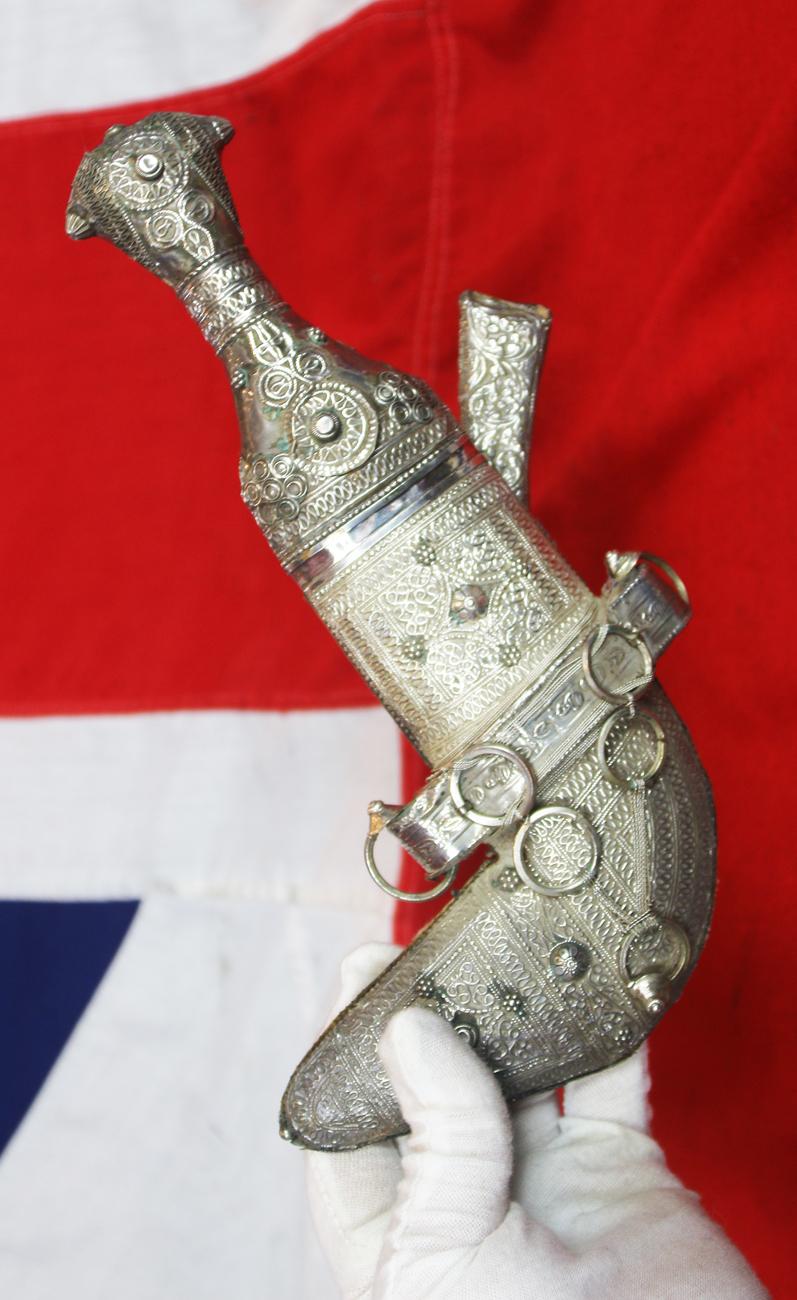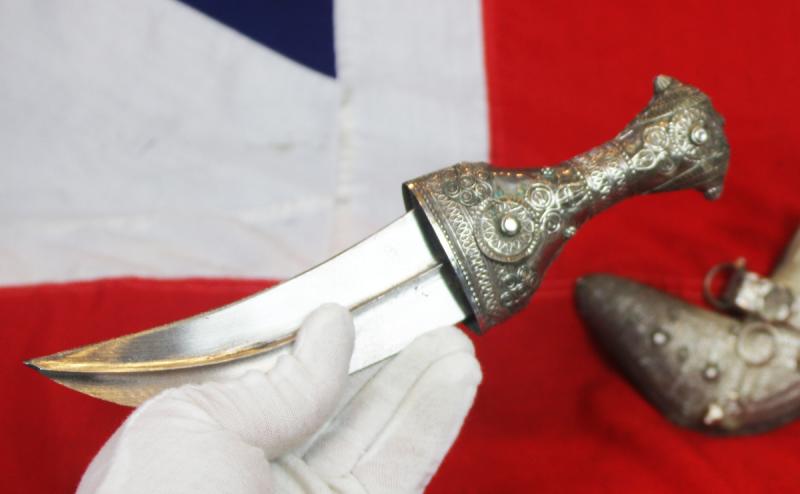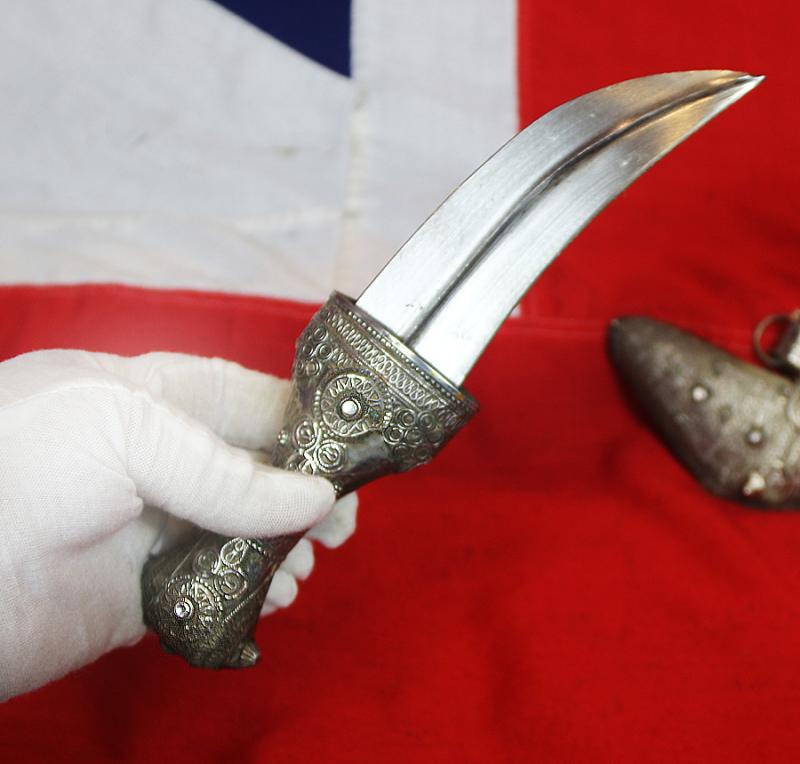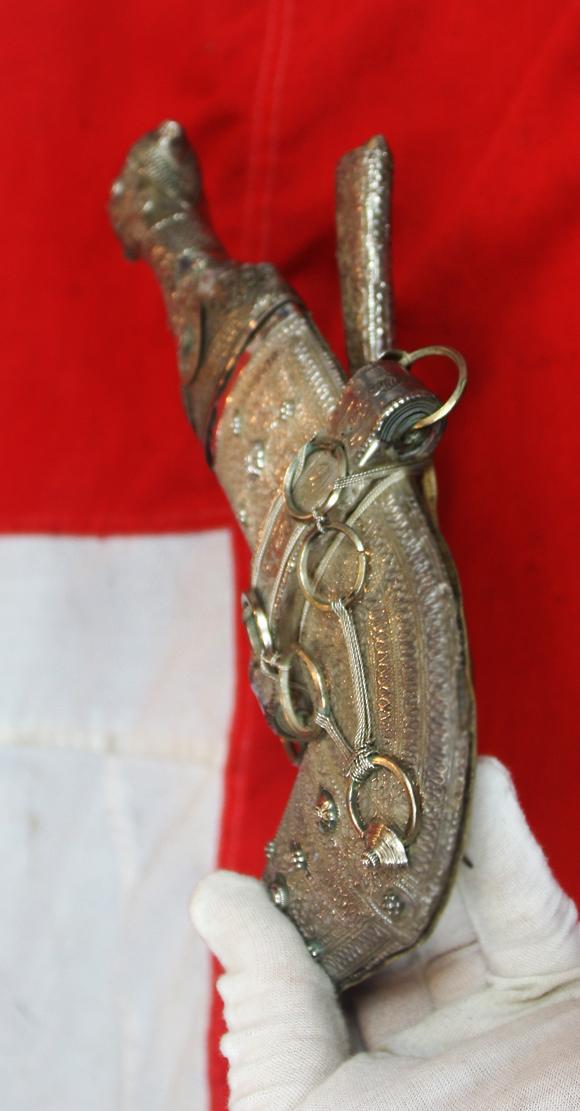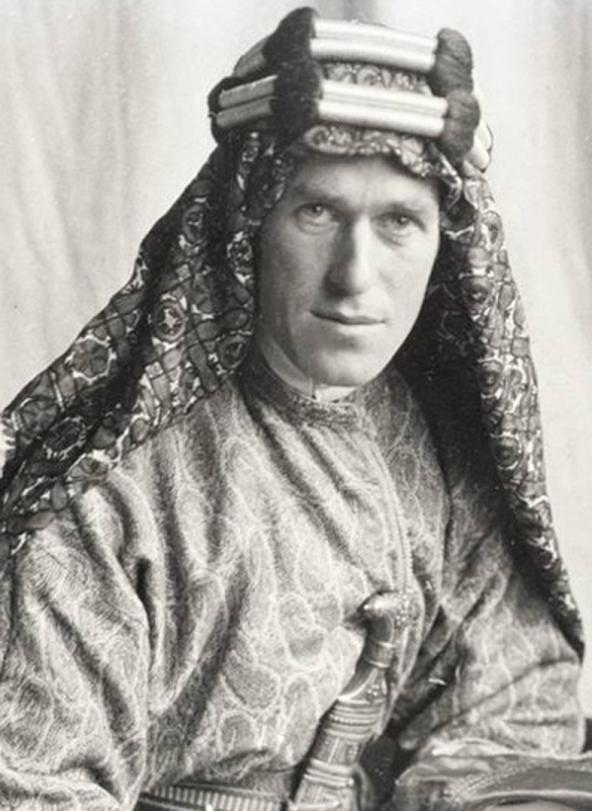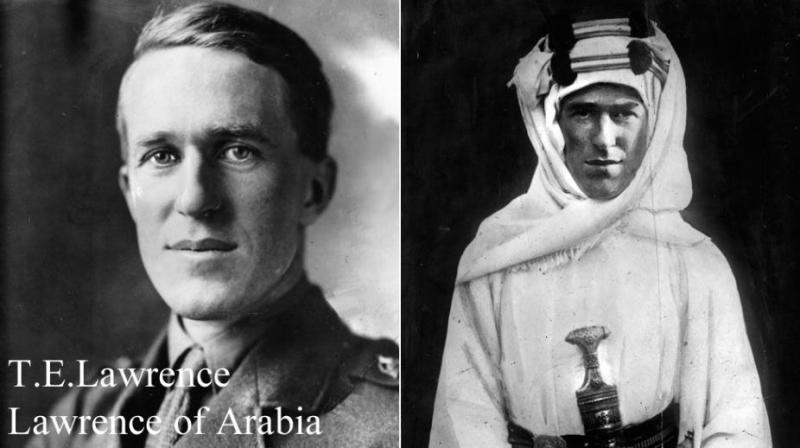A Most Attractive, 20th Century, Silver Omani Jambiya Knife. a Symbol of Status in UAE Society
An Omani Sa'idiyyah khanjar, a Khanjar with the distinctive ‘7 Rings’ to denote its owner is gifted to a person of high status, comprising of an all silver fronted scabbard and hilt. Decorated in intricate and delicate silver filigree wirework with a pattern similar to the 'tree of life'. Also known as the Jambiya, daggers of this quality were almost always usually custom made for presentation, not use. Lawrence of Arabia had several very similar ones presented to him, they were his favourite dagger, and he was frequently photographed wearing them. Silver, usually more often than not, coin silver, not English hallmarked silver. The jambia, a curved Islamic dagger, is the main customary accessory to the clothing worn by Arabian men. For centuries the people of South Arabia have inherited the their jambiahs from generation to generation. There are several theories about the origin of the Jambia. There are historical facts, concerning the existence of the Jambia revealing that it used to be worn at Sheban times, in the Himiarite kingdom. They take the statue of the Sheban king (Madi Karb 500 bc ) as proof. This statue, which was discovered by an American mission in Marib in the 1950s, was found to be wearing a Jambia. Since The most expensive and famous jambiya was purchased by Sheikh Naji Bin Abdul-Aziz Al-Sha'if, who was able to pay US $1 million for one prized and ancient piece. This jambiah had a historical importance, belonging to Imam Ahmed Hamid Al-Din, who ruled Yemen from 1948 to 1962. The Imam's most precious possession was transferred to Sheikh Hussein Al-Watari, who in turn sold it to Sheikh Al-Sha'if. According to Sheikh Muhammad Naji, the son of current owner of the most precious jambiah, his father's prize is the most expensive and famous one in the country. Its cost was made so high because it is one of the best jambiahs ever made by Al-Saifani, and a piece of history, as well.
Just returned from our conservation workshop.
Code: 25066


